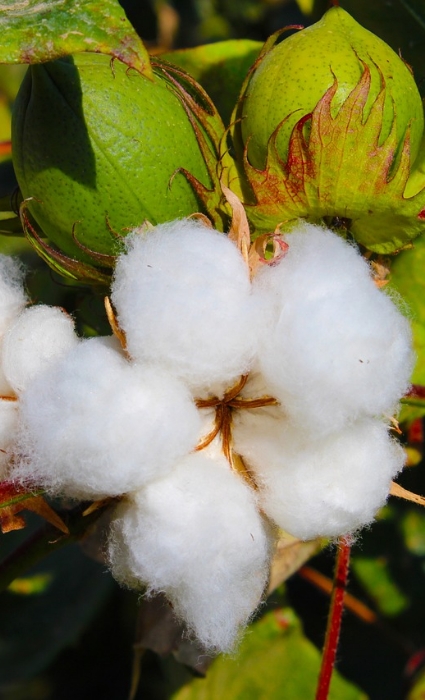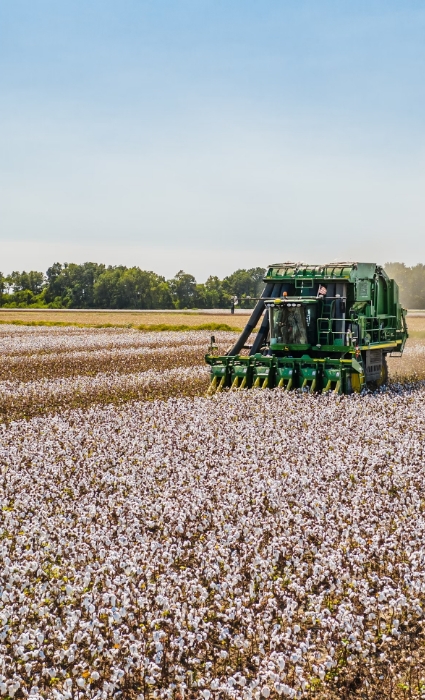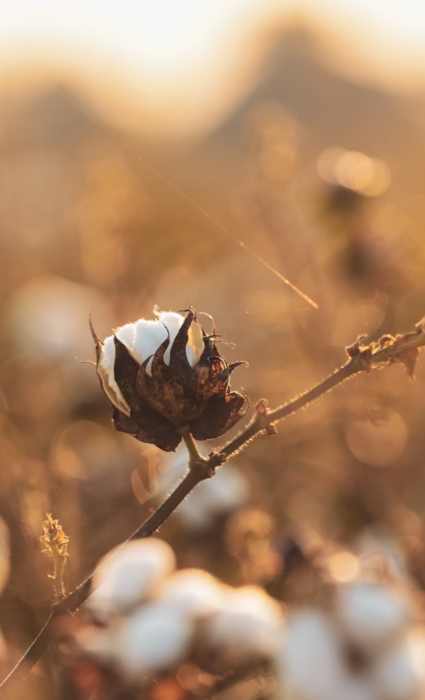The various facets of organic cotton The - Première Vision Paris - Denim Première Vision - Première Vision New York
Cotton remains unrivaled for its versatility. Whether for jackets, shirts, jeans, dresses or textile accessories, this star fiber is the most widely used of all natural materials. Its organic version enhances its environmental performance.
Frequently found in dense casual qualities in textured knits, fleece or interlocks, or in denim, it also knows how to move upmarket. Long-fibre premium organic cottons, which guarantee longevity over time, are used for refined shirting poplins or double-faced fabrics for overshirts.

Although most of the cotton is still grown in Asia, a number of European projects are underway. To support this “European origin” axis, we favor blends with traceable premium linen certified European flax®. It can also be revisited by combining it with innovative fibers such as Spiber’s Brewed Protein™, a protein fiber developed by fermenting plant-based ingredients.
Les décors et enductions jouent aussi la carte de la naturalité avec des flocks de coton biologique provenant de chutes de production et des enductions réalisée en boucle fermée avec des déchets de bois.
In a high-performance version, very dense, compact weaves for trench coats or citywear offer waterproof, windproof or downproof properties, without additional chemical treatment.
To ensure traceability, various certifications accompany organic cottons:
GOTS
The Global Organic Textile Standard certifies a product made up of at least 70% organic fibres. Crops must meet the principles of organic farming, banning the use of GMOs, synthetic pesticides or herbicides.
The fibres authorised in a blend are plant fibres, with the exception of conventional cotton; lyocell; animal fibres except angora; viscose or modal to a limit of 10%; recycled synthetics; conventional synthetics with a maximum of 10%.
The certification governs the use of chemical products from the cleaning of the fibres to the finish. It checks water and energy consumption as well as waste and wastewater management, thus guaranteeing an environmental footprint and optimal safety for both workers and consumers.
GOTS also ensures the respect and improvement of working conditions according to the criteria of the International Labour Organization.


OCS
The Organic Content Standard focuses on checking the organic content of materials. The cotton must come from certified organic farms, free from GMOs and grown without pesticides, or synthetic fertiliser.
The certification guarantees a minimum organic material content of 5%. Each stage in the value chain is audited by a third-party, enabling traceability from the farm through to the finished product.
PBP Cotton
The goal of the Peace by Peace Cotton programme is to promote organic cotton.
It supports Indian cotton growers in their transition towards organic farming and provides their children with scholarships.
